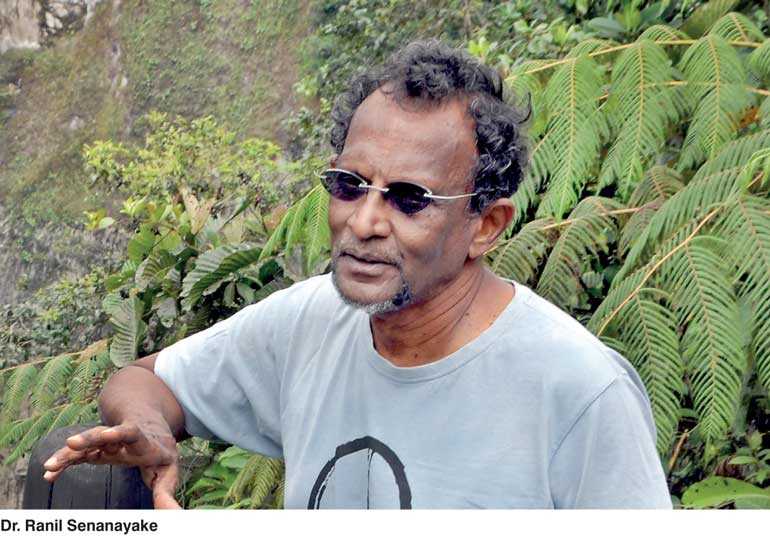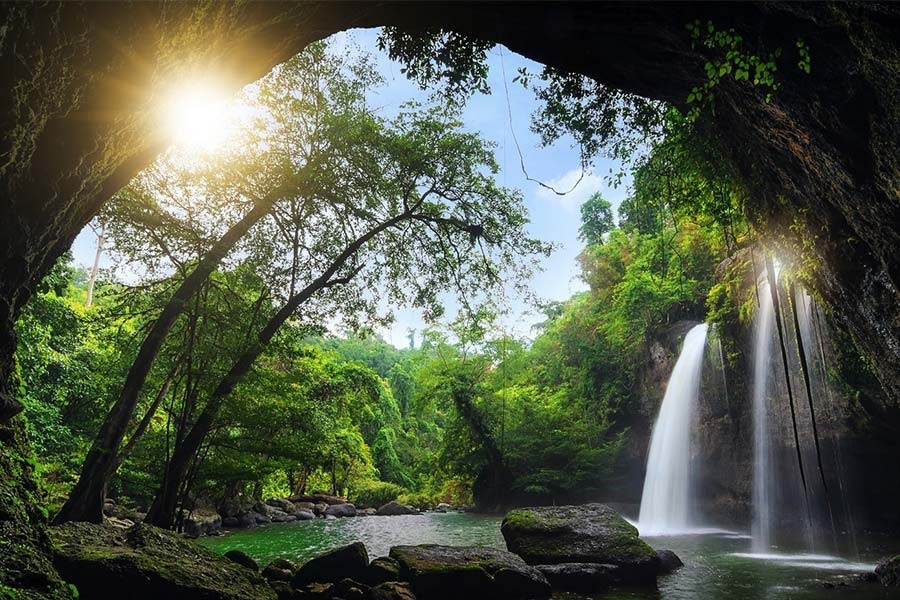Dr. Ranil Senanayake is a systems ecologist from Sri Lanka, renowned for pioneering analog forestry—a sustainable approach that emulates natural forest ecosystems to restore degraded landscapes. He serves as the Chairman of EarthRestoration, an initiative focusing on primary ecosystem services (PES) such as oxygen generation, carbon sequestration, and water purification.

Dr. Ranil Senanayake, popularly known as the “Snake Man,” is the nephew of the first ever Prime Minister in Sri Lanka, and the man who in 1981 revived “organic” farming in a small but powerful way. Already a world-renowned environmentalist, Senananake’s passion for traditional organic farming led him to transplant his expertise in Africa and South America back to his homeland. There, he took a degraded tea estate in Mirahawatta, Bandarawella and transformed it into “analog forestry,” a concept of ecological restoration which mimics natural forests to create socio-economically productive, wholesome and self-sustaining landscapes. His original 17-acre forest now boasts of sustainable organic farming along with lush, magnificent tree cover.
Dr. Senanayake advocates for the concept of an “Oxygen Economy,” which assigns economic value to the production of oxygen by photosynthetic organisms. He emphasizes that oxygen, while abundant, is not an infinite resource; its levels are declining due to deforestation and increased industrial consumption. The Oxygen Economy proposes compensating entities that contribute to oxygen production, such as farmers and communities engaged in reforestation, thereby incentivizing the maintenance and expansion of photosynthetic biomass. This framework aims to address environmental degradation and economic inequality by recognizing and valuing the essential ecosystem service of oxygen production.
Practical Steps to Implement the Oxygen Economy
Establish Oxygen Production Units (OPUs): Identify and designate oxygen-producing areas, including forests, wetlands, and urban green spaces. Encourage local communities and farmers to participate by providing incentives for tree planting and biomass cultivation.
Measure and Validate Oxygen Production: Utilize satellite monitoring, oxygen sensors, and AI-based modeling to quantify and track oxygen output.
Issue Oxygen Credits and Certification: Develop Oxygen Credits, similar to carbon credits, allowing businesses and industries to offset their oxygen consumption by purchasing credits from verified producers.
Create Economic Incentives: Encourage corporations, industries, and even space exploration companies to invest in Oxygen Credits while governments provide tax benefits and subsidies to participants.
Policy and Regulation: Establish legal frameworks to ensure accountability and prevent uncontrolled exploitation of global oxygen resources.
Global Awareness and Expansion: Work with international organizations to integrate oxygen valuation into sustainable economic policies.
Lessons from Sri Lanka
A pilot project in Sri Lanka saw women in farming communities being compensated for nurturing trees, with oxygen production measured and rewarded over four years. This initiative demonstrated the viability of the Oxygen Economy and its potential global impact.
Addressing Challenges
Critics argue that monetizing oxygen risks commodifying a natural resource that should remain freely available. However, the Oxygen Economy aims to ensure that those contributing to sustainability benefit while industries that deplete oxygen are held accountable.
A Vision for the Future
The Oxygen Economy challenges us to move beyond GDP as a measure of success, valuing ecosystem services that sustain life. By aligning economic incentives with environmental stewardship, it offers a pathway to a more sustainable and equitable future.
Standing for Environmental Conservation
The importance of preserving oxygen-producing ecosystems was notably highlighted in 2020 when Sri Lankan forest officer Devani Jayathilaka stood against political pressure to clear mangroves for development. During a meeting led by State Minister of Inland Fisheries Industry Sanath Nishantha Perera, she refused to approve the clearance of protected mangrove forests for a playground, citing legal protections and ecological significance. Her firm stance led to the withdrawal of the proposal.
In a separate incident, Jayathilaka was confronted by a political supporter who challenged her, asking, “Why do we need oxygen in Sri Lanka?” Her response underscored the fundamental necessity of oxygen for all living beings and highlighted the urgent need for conservation efforts. This exchange went viral, symbolizing the ongoing struggle between environmental preservation and short-term development interests.
Additionally, Officer Jayathilaka intervened to protect the critically endangered plant species Crudia zeylanica near the Daraluwa Railway Station in Gampaha, preventing its removal for expressway construction. Her advocacy led to government inspections and discussions about conservation strategies.
These incidents underscore the challenges environmental officers face in enforcing conservation laws, highlighting the necessity of frameworks like the Oxygen Economy to protect and sustain our planet’s vital ecosystems.







